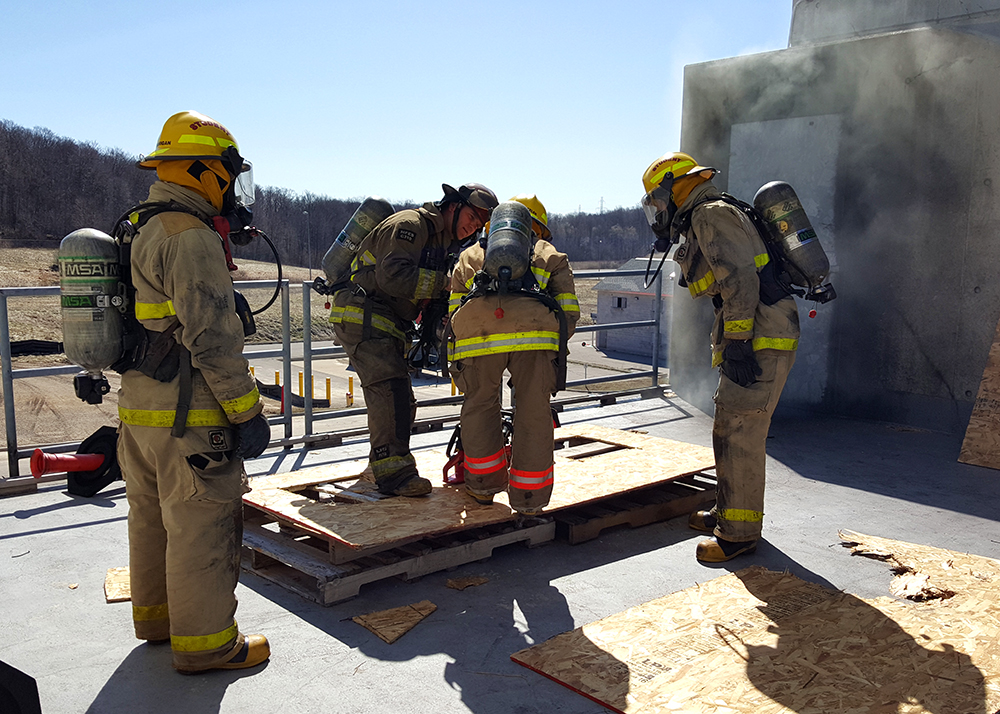On April 20, students in Conestoga’s Pre-Service Firefighter Education and Training program finished their second term by completing a full day of live fire drills at the Waterloo Regional Emergency Service Training and Research Complex.

Pre-Service Firefighter students practice using a chainsaw in a simulated flat-roof scenario during a full day of live fire drills at the Waterloo Regional Emergency Service Training and Research Complex.
The complex serves as a training facility for the region's fire departments, police and emergency medical services. It features prop sites for confined space training, vehicle fire rescue and trench rescue and also offers a 3,000 square foot multi-level fire training building that students used throughout the day to complete four emergency scenarios.
Students attend the facility weekly to complete skills training and lab work, but this marked the first time they completed drills using live fire.
“The scenarios have been designed to incorporate all the skills and training students have learned throughout their first and second terms,” explained program coordinator Brad Kueneman. “Today they have to apply those skills while also demonstrating teamwork and communication.”
Kueneman said working with real smoke would present a challenge for the students who trained previously in a smaller two-storey structure using theatrical smoke. The fire training building includes a seven-storey high-rise section and a five-storey low-rise area. During training exercises burn pads inside the building are loaded with wooden skids and straw to create smoke and intense heat levels.
In one training scenario students were required to respond to an emergency in a three-storey wood frame residential structure. Divided into six companies, each group was assigned tasks that ranged from establishing water supplies to performing fire control and search and rescue. Other duties included deployment of ground ladders, ventilation of the structure and illumination of the scene.
In responding to the simulations, students worked with equipment they would use in real emergency situations including fire trucks, hoses, ladders, radios, chainsaws and generators. Scenarios were followed by a debriefing with instructors where students could reflect on strengths and weaknesses and discuss areas of improvement. Instructors, drawn from regional fire departments, assessed student skills throughout each scenario.
Conestoga’s Pre-Service Firefighter Education and Training program is delivered over three terms, with lab work at the training facility supported with courses in theory. Kueneman said the students will continue their scenario-based training when they return in September and added the final term will present more complicated real-world scenarios where students will be required to take on greater leadership roles.
For more information, visit the Pre-Service Firefighter Education and Training program page
